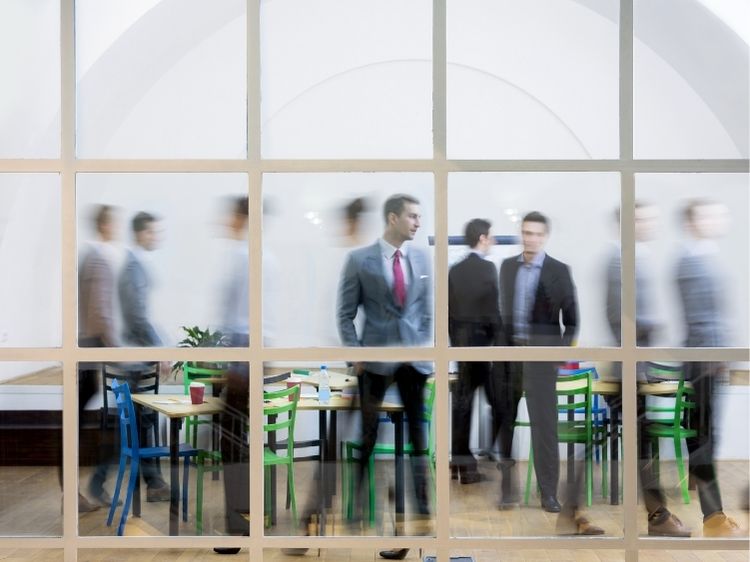Business casual—sounds simple, doesn’t it? But when you’re standing in front of your closet, wondering if that blazer is too formal or those khakis too relaxed, it’s clear the concept can be tricky. If you’re asking, “What is business casual?” you’re not alone. Let’s break it down, simplify the dos and don’ts, and help you strike the perfect balance between professional and comfortable.
What Is Business Casual?
Business casual is a dress code often adopted in workplaces that blends professional attire with a more relaxed, comfortable vibe. It’s not as formal as business professional (think suits and ties) but still requires a polished appearance.
In essence, business casual aims to project competence and professionalism while allowing some personal style and comfort. The exact definition can vary by company, industry, and even geography, which adds to the confusion.
Key Characteristics of Business Casual
Here are the basics that define business casual:
- Tops: Collared shirts, button-downs, blouses, and sweaters.
- Bottoms: Khakis, chinos, dress pants, and sometimes dark, non-ripped jeans.
- Shoes: Loafers, flats, oxfords, or ankle boots.
- Accessories: Minimal and tasteful—think a classic watch or simple necklace.
Breaking It Down: What’s In and What’s Out?
Let’s get specific about what works and what doesn’t in a business casual wardrobe.
Tops: The Starting Point
- In: Polo shirts, collared blouses, button-ups, sweaters.
- Out: T-shirts, tank tops, and overly revealing or flashy tops.
Bottoms: The Foundation
- In: Dress pants, chinos, tailored skirts.
- Out: Ripped jeans, shorts, or leggings.
Footwear: Ground Rules
- In: Closed-toe shoes like loafers, oxfords, or ballet flats.
- Out: Sneakers, flip-flops, and overly casual sandals.
Accessories: Keep It Simple
- In: A leather belt, subtle jewelry, and neutral bags.
- Out: Loud or oversized jewelry and overly casual bags like backpacks.
Why Does Business Casual Matter?
Still wondering why it’s important to nail this dress code? Here’s why:
- First Impressions Count: Dressing appropriately shows you respect the workplace environment.
- Confidence Booster: Feeling good in what you wear enhances your self-assurance.
- Adaptability: It’s versatile—perfect for meetings, casual Fridays, and everything in between.
Crafting Your Business Casual Wardrobe: Tips for Success
Building a business casual wardrobe doesn’t have to cost an arm and a leg. Here’s how to do it smartly:
- Start with Neutrals: Think black, white, navy, and beige. These colors are easy to mix and match.
- Invest in Basics: High-quality essentials like a blazer or a pair of tailored pants go a long way.
- Mind the Fit: Ill-fitting clothes can ruin your look, no matter how “correct” they are.
- Check the Company Culture: When in doubt, observe what colleagues wear or ask HR for guidelines.
Business Casual for Women
Women have a broad range of options when it comes to business casual attire:
- Tops: Blouses, cardigans, or neatly pressed shirts.
- Bottoms: Pencil skirts, slacks, or tailored culottes.
- Shoes: Closed-toe flats, loafers, or low-heeled pumps.
Tip: Avoid clothing that’s too tight or revealing—aim for a comfortable yet polished look.
Business Casual for Men
For men, business casual often includes:
- Shirts: Button-down shirts, polos, or sweaters.
- Pants: Chinos or dress pants in neutral shades.
- Shoes: Loafers, oxfords, or other dressy shoes.
Tip: Keep a blazer handy—it can elevate even the most basic outfit.
Common Mistakes to Avoid
- Too Casual: Showing up in sneakers or graphic tees.
- Overdoing It: A full suit is usually too formal unless otherwise specified.
- Ignoring Grooming: Polished shoes and neat hairstyles matter.
FAQs About Business Casual
What’s the difference between business casual and smart casual?
Business casual leans more professional, while smart casual incorporates more trendy or relaxed elements.
Can I wear jeans in a business casual environment?
Dark, non-ripped jeans may be acceptable in some workplaces, but always check the company policy first.
Are sneakers ever business casual?
Typically, no. However, some modern workplaces with relaxed policies might allow minimalist sneakers.
Is a blazer required for business casual?
Not necessarily, but it can be a great addition if you want to appear more polished.
Summary: Mastering Business Casual
So, what is business casual? It’s all about balancing professionalism with comfort. Stick to polished, well-fitted pieces, avoid overly casual items, and observe your workplace’s culture for cues. With the right approach, you’ll nail the look and feel confident doing it.
Authoritative Links:
- Business Casual Explained: https://www.thebalancesmb.com/business-casual-definition
- Dressing for the Office: https://www.careerbuilder.com/advice/business-casual-guidelines
- Business Casual Tips for Men and Women: https://www.forbes.com/business-casual-guide

